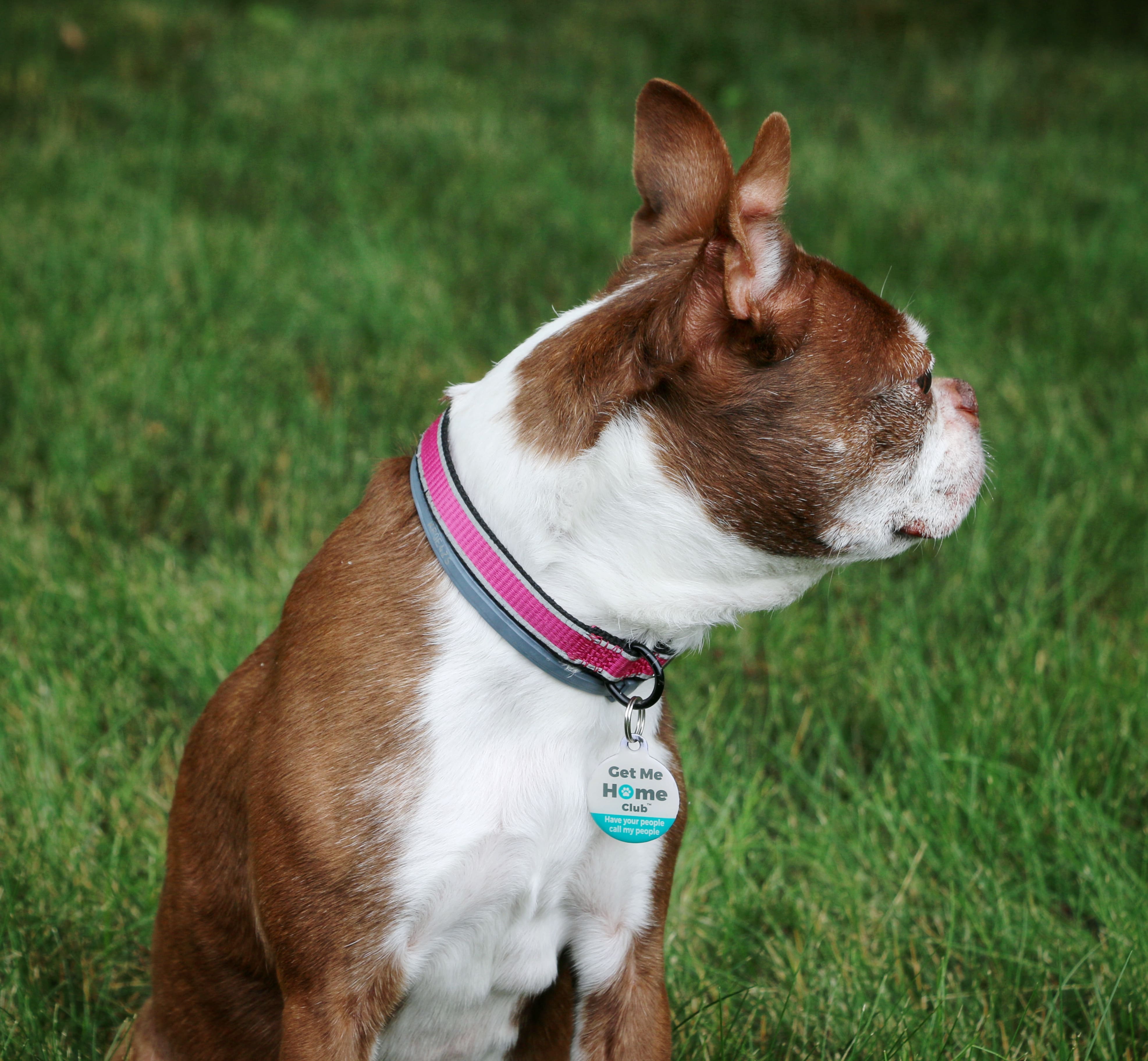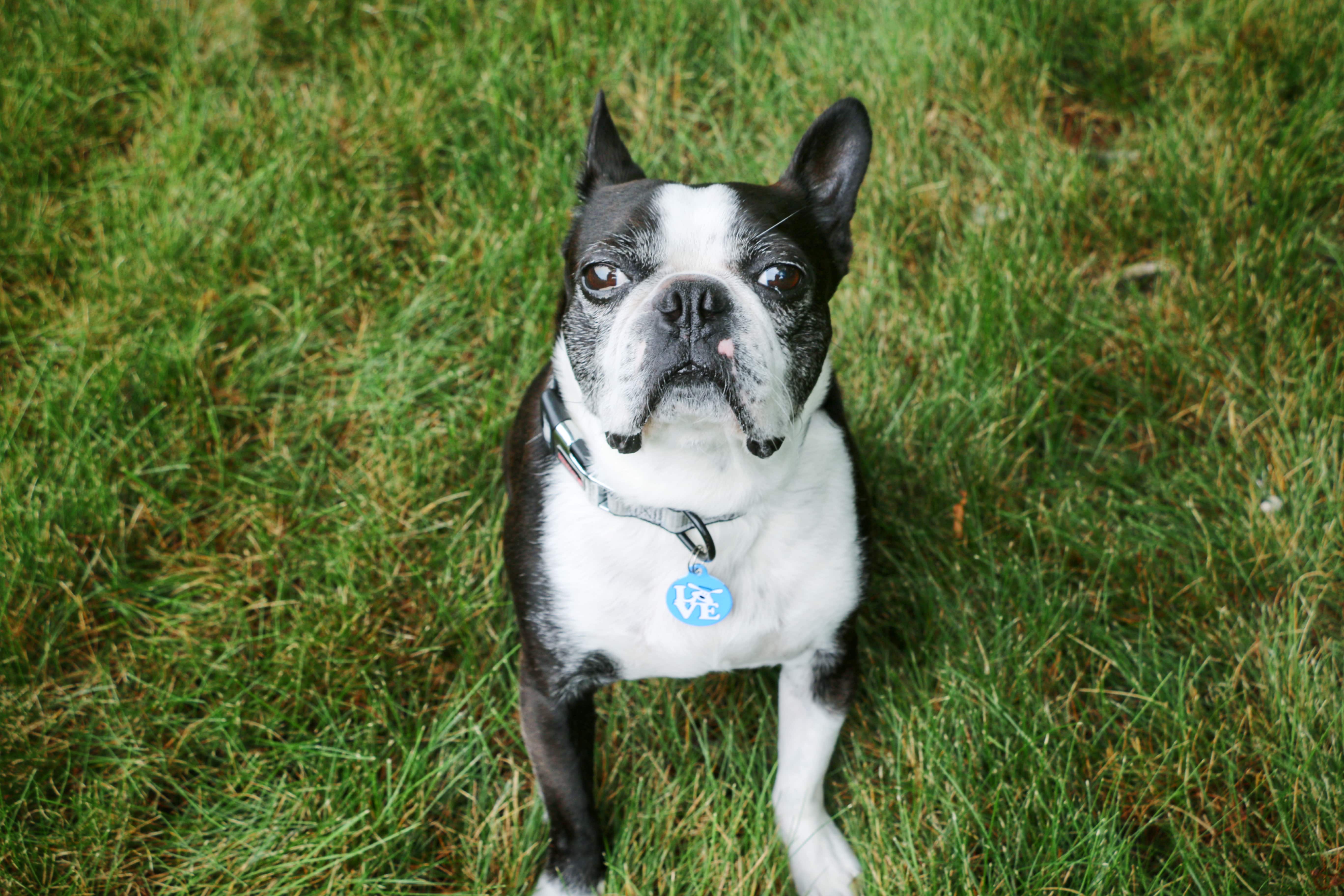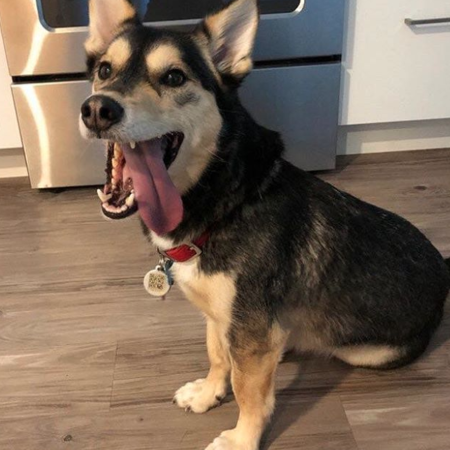This is a featured guest post from A Dog Walks Into a Bar with Bryn Souza
The summer marks a three month window where homegrown fireworks displays could happen at any moment. While an annoyance for some, the loud noises can be terrifying for pets, triggering their fight or flight response. That, combined with warmer weather, open windows, and visitors who don’t always fully shut doors upon their arrival, could lead to a pet finding their way outside of the safety of your home.
Animal control officers are busy year-round, but the window of time surrounding the Fourth of July holiday is always more hectic. I had a chance to connect with Renee Robichaud, our friendly neighborhood ACO (Animal Control Officer), who helps to service a nearby large city and surrounding towns to get an idea of the top things she wishes pet owners knew about lost pets.
 It could happen to anyone
It could happen to anyone
Yes, your pet is an indoor pet. It has a fenced-in yard. A leash is regularly used for walks outside. While all of these statements can be true, that doesn’t mean an escaped pet is out of the realm of possibility. Renee even admitted in our conversation that she had a dog who would stray a bit farther than she would have liked on hikes. If a lost dog can happen to the person who is an ACO, it could literally happen to anyone.
Along those lines, it’s important to note that your local animal control agency is a judgment free zone.There’s no need to share excuses for why your dog decided to go on extended stroll beyond the confines of your yard. It happens. What’s more important is time, communication, and use of the tools you have.
Time is important
As soon as you notice your pet has escaped, your first course of action should be to call your local animal control office and/or police department. This will allow those locations to be aware of your pet’s description. This will allow both offices to immediately be in contact should an animal that matches the description you provided be spotted or captured.
“A lot of people think, when their dog goes missing, the first thing they should do is go looking for their dog. Meanwhile, an Animal Control Officer might have already picked it up and, had they known a description and basic idea of where it might be, they could have contacted you as soon as it was in their possession,” explains Renee. “Many people would be surprised at how quickly a person would call in a loose dog, and it would have been resolved, if Animal Control had already been involved.”
Don’t underestimate the power of a visual cue
“A collar and tag is the number one thing to get a lost cat or dog home quickly and safely,” stated Renee. In fact, a collar and tag might prevent animal control from having to get involved at all.
If a well meaning person finds a loose pet that has a collar and tag with correct contact information, those people will normally call the pet owner and assist with reunification. That said, if a pet is loose often, people may elect to get animal control involved in order to keep a record of frequent occurrences of a lost pet. Sometimes a collar and the dog’s license tag is sufficient for connecting the pet with the pet owner as it’s something that can be researched by Animal Control Officers in their database.
You might have noticed that the word “correct” was emphasized. Renee shared that, while a collar and tag is helpful, in that it helps to show a pet is not a stray, when the contact information for a pet owner is out-of-date, or an address is no longer correct, it is harder for well-meaning people in your neighborhood, Animal Control Officers, or the police to match a lost pet with its owner.
It’s not uncommon for telephone numbers to no longer be in service, which can extend the length of time a pet is separated from their owners and potentially make their experience more stressful if they need to stay in a facility for a longer window of time.
The same is true for microchips. This "invisible identification" in the form of tiny chips can be scanned by veterinarians or ACOs. Once scanned, the microchip registry will contact you to notify you that the chip had been scanned. If a pet owner fails to register the chip, or fails to update their contact information, the chip does little for helping with reunification.
 Animal control isn’t looking to take your pet
Animal control isn’t looking to take your pet
“A lot of people have a mental image of a ‘dog catcher’ from old school cartoons, like Lady and the Tramp, where we are driving around, searching for dogs to snatch up,” shares Renee. This is an out-of-date and inaccurate way to view what an Animal Control Officer does. They know that pets can be stressed if they aren’t in the comfort of their home and that, while shelters do all they can to ensure a pet is safe and calm, it can still be an anxiety-producing experience for them.
Renee goes on to explain, “People don’t realize the amount of work that goes into each animal we do bring into our facility, even an animal that is quickly reunited. Each animal we put our hands on, we need to assess and evaluate if they are healthy, if they’re injured in any way, what their core body temperature might be. If they stay with us, they also need to be evaluated behaviorally.” All of this requires time and resources, requiring the attention of staff and volunteers.
Final points
Barring human involvement, a lost pet doesn’t often go on super long and distant excursions. While Homeward Bound is an amazing movie, more often than not, a lost pet will likely be relatively close to home. Renee shared that they had dogs come in that were from Florida, North Carolina and Kansas during the pandemic, but these were all times when a person got involved and wound up bringing them farther away.

With this information in mind, knowing the contact information for your local animal control offices before an issue comes up; initiating communication with them and the local police as soon as a pet goes missing, and having up-to-date visual cues such as a collar and tag, are the most valuable ways to help ensure a lost pet finds its way back to your home as quickly and safely as possible.
 A Dog Walks into a Bar will educate and entertain visitors by sharing informative and fun weekly posts that focus on pet ownership and the adult beverage industry. We aim to share a variety of posts focusing on dog friendly locations and events, fun adventures, DIY projects, recipes, giveaways and charitable causes. Our primary aim is to assist animal rescue organizations and philanthropic causes that help animals and our local community.
A Dog Walks into a Bar will educate and entertain visitors by sharing informative and fun weekly posts that focus on pet ownership and the adult beverage industry. We aim to share a variety of posts focusing on dog friendly locations and events, fun adventures, DIY projects, recipes, giveaways and charitable causes. Our primary aim is to assist animal rescue organizations and philanthropic causes that help animals and our local community.



.png?d4ax2eEjuUDS1N9S5XPgzOo8phKAGEMN)